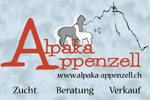Articles by Alpaca World Magazine:
AI Success
Jorge Reyna
Australian researchers have made a breakthough in the use of artificial insemination with frozen-thawed sperm with the first alpaca crias due to be born in 2007. Their work with twelve females has resulted in five pregnancies.
Since December 2005 the team from Alpaca Reproductive Technologies (ART), Luis and Suzy Bethencourt and Jorge Reyna, have been working on sperm collection, liquefaction, freezing and artificial insemination. After improving the collection technique, developing a new liner that has a double compartment which resembles the uterine horns and using a modification of a human sperm liquefaction protocol, the next step was to test some commercial freezing diluents, different temperatures and times of freezing. Samples obtained from 10 animals were processed weekly for a period of 4 months until the optimum protocol was found. Sperm samples used were no less than 70% motile at collection and liquefaction. Frozen-thawed samples were between 40-60% motile. Concentration varied between 70 - 175 x 106 sperm/ ml and it was important to determine the dilution rate of the final sample for freezing. Suzy Bethencourt said “I was so nervous the first time I was handling sperm, as I knew it is very delicate and if you don’t keep everything clean and neat at 37˚ C degrees you can ruin a good sample”.
The field trial was conducted with 15 females which had ovulation induced with an injection of seminal plasma. Time of ovulation was monitored by transrectal ultrasound and Jorge Reyna said “The time of the deposit of the sperm into the uterine horn was crucial”. Pregnancy diagnosis was conducted at day 75 by observation of the corpus luteum and visualisation of the foetus using transrectal ultrasound. Evaluations indicated that 5 of the 12 females inseminated became pregnant (42%). Luis Bethencourt said “even if the results are not commercially viable yet we have proved we do not require expensive equipment and complicated protocols to develop the technique, just many hours of work and perseverance”. The protocol still needs to be optimised but is a good start that encourages us to do more research in this area. Hopefully next year the first crias will be born by AI using frozen-thawed sperm in Australia.
Following this field trial and the knowledge and skills developed on sperm handling and processing, the team is planning to use fresh sperm to inseminate superovulated females. Jorge Reyna said “This will allow us to maximise the use of our male studs with the possibility of conducting several inseminations to ensure all the oocytes released will be fertilised and to avoid causing irritation of the uterus of the donor females as a product of successive matings, and it will simplify the procedure”.
The application of artificial insemination in Australia is a vital reproductive technique to genetically improve alpaca herds, and in conjunction with ET it will be a powerful tool to develop an extra fine Australian alpaca.
Tweet



